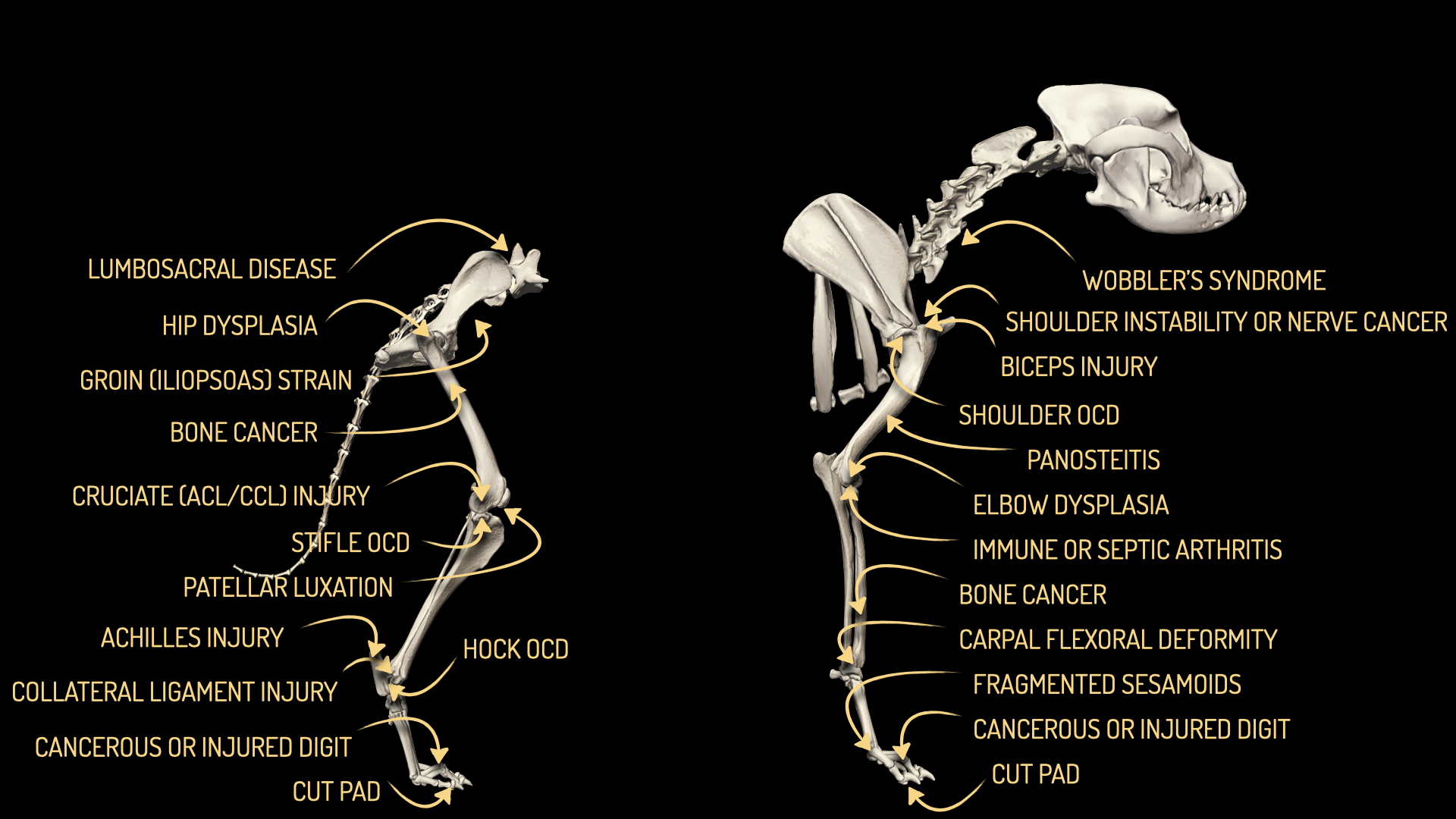DEVELOPMENTAL JOINT DISEASES
NEUTERING AND JOINT DISEASE
A 2020 study proposed a link between neutering and joint disease in some breeds. Neutering was not associated with increased risk in Boxers. To date, no studies have shown a causal relationship between neutering and joint disease.
SPECIFIC CONDITIONS
-
Panosteitis risk in Boxers is 1.8x higher than average. It usually affects highly-strung puppies and causes cycles of short-term lameness which can switch between limbs.
Shoulder OCD risk in Boxers is 2.2x higher than average.
Chronic forelimb lameness in Boxer puppies warrants veterinary investigation. Elbow dysplasia is a possible cause and prompt treatment can improve long-term prognosis.
-
Boxers are ranked #13 for elbow arthritis in a UK database. The best treatment depends on age and arthritis severity.
Boxers are ranked #12 for malignant bone cancer. Average age at diagnosis is 8y.
Sporting dogs have a higher risk of muscle and ligament injuries. Diagnosis can be challenging because x-ray changes are often present in Boxers without shoulder pain.
-
Panosteitis risk in Boxers is 1.8x higher than average. It usually affects highly-strung puppies and causes cycles of short-term lameness which can switch between limbs.
Cruciate ligament problems are a common cause of chronic hindlimb lameness in young Boxers. They are ranked #8 for TPLO surgery. Diagnosis can be difficult without x-rays.
A 12.5% incidence of hip dysplasia ranked Boxers #95 in 2020. A clinical diagnosis of hip dysplasia requires tests to rule-out knee, spine and muscle injuries.
-
Cruciate ligament problems are the commonest cause of chronic hindlimb lameness. Boxers are ranked #8 for TPLO surgery. Diagnosis can be difficult without x-rays. Tap here to learn more about how to diagnose and treat ACL injuries.
Patellar luxation without concurrent cruciate ligament injury is rare in adult Boxers.
A clinical diagnosis of hip dysplasia requires tests to rule-out knee, spine and muscle injuries.
Severe pain in adults could be caused by Achilles injury, lower back problems or bone cancer. Boxers are ranked #12 for malignant bone cancer. Average age at diagnosis is 8y.




